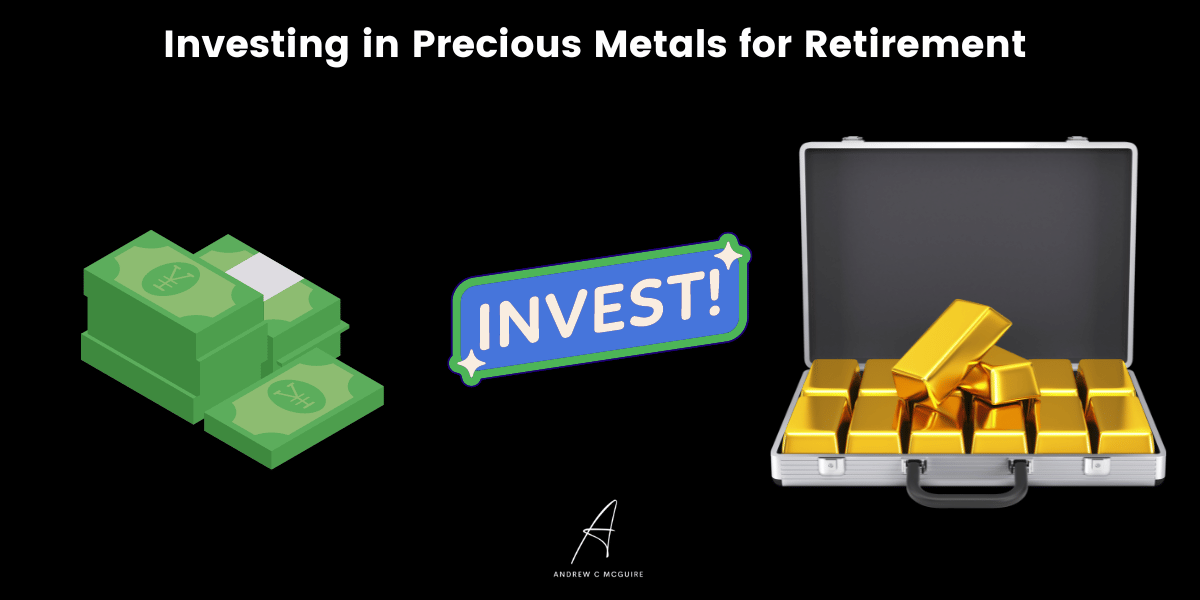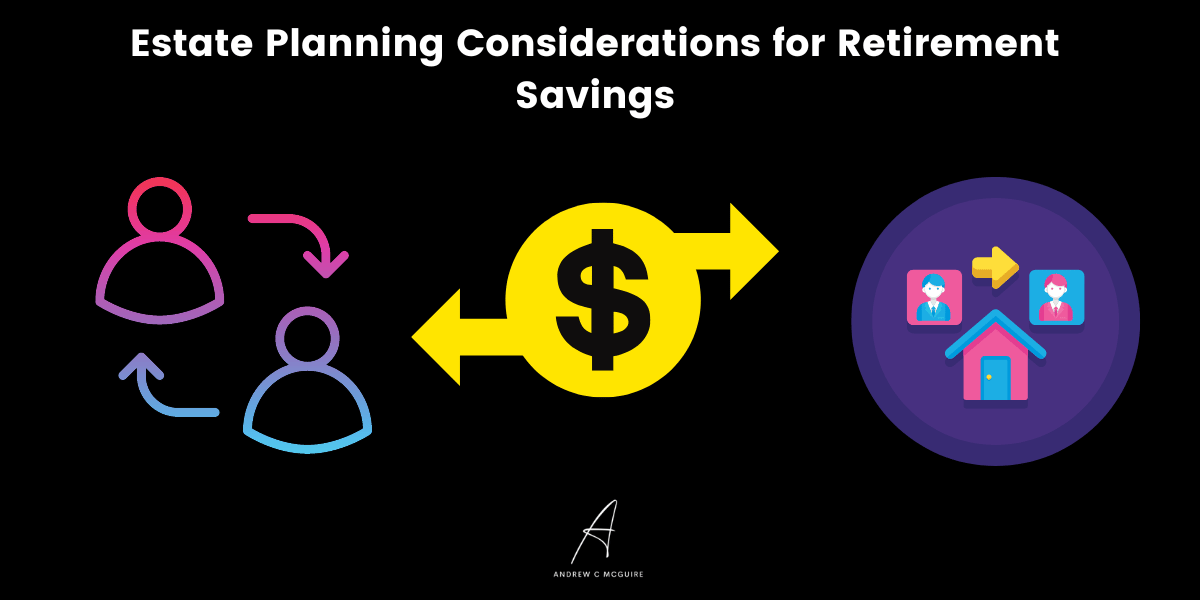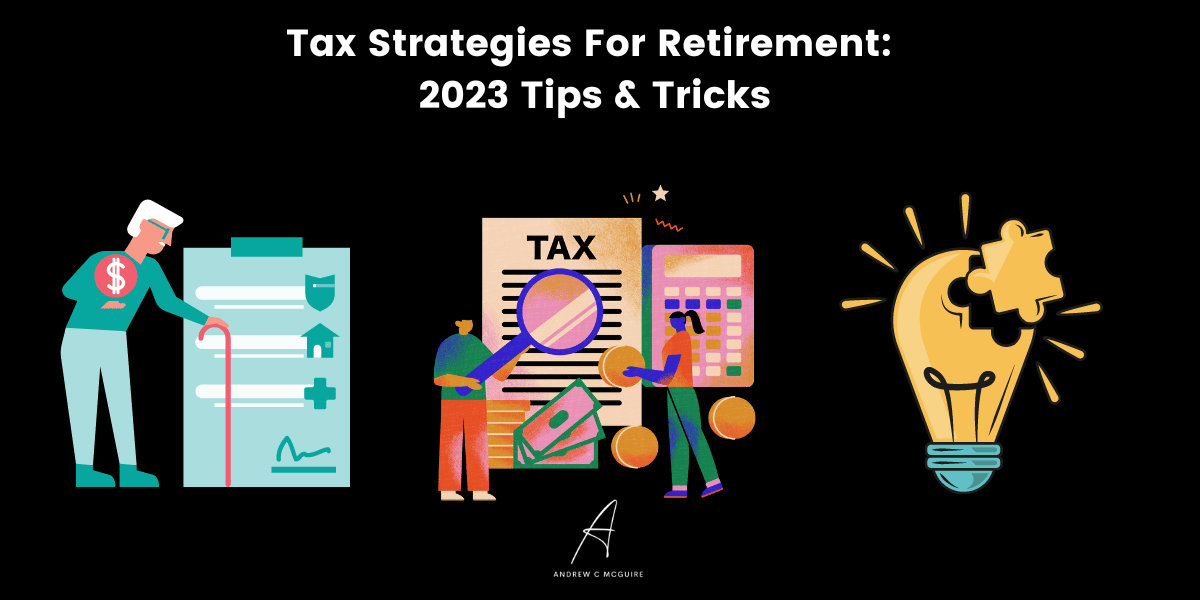Everyone seeks ways to reduce spending and increase their revenues. One fundamental means to achieve this is by reducing the effects of taxation on your retirement income, investments, withdrawals, and spending. When it comes to investment, precious metals investing is a very great option for individuals looking to protect their hard-earned money from the detrimental effects of inflation and grow the money simultaneously. However, you need to find the right precious metal company to effectively grow your money and manage tax on your investment. My #1 recommendation of all the top precious metals investment companies out there is Augusta Precious Metals.

We earn a commission if you make a purchase, at no additional cost to you.
When it comes to retirement planning, taxes can be one of the most significant obstacles standing in your way. Fortunately, there are a number of tax strategies for retirement that you can use to protect and grow your wealth. Whether you’re looking into investing in precious metals or taking advantage of tax credits for contributions, understanding how taxes will affect your nest egg is essential if you want to secure financial stability during retirement. In this blog post, we'll explore some key tips on minimizing taxation when building up savings for later life – from exploring traditional IRAs to estate planning considerations and more.
Investing in Precious Metals for Retirement

Investing in precious metals for retirement can be a very effective way to diversify your portfolio and protect your wealth. Precious metals are considered safe-haven investments that have historically held their value over time. Investing in these assets can provide an additional layer of security for your retirement savings.
Advantages of Investing in Precious Metals
Precious metals offer several advantages when it comes to investing for retirement. They are tangible assets that are not subject to the same market volatility as stocks or bonds. This makes them attractive options for those looking to preserve their wealth over the long term. Additionally, they tend to hold their value better than other asset classes during times of economic uncertainty or inflationary periods. Finally, precious metals may also provide tax benefits depending on how they are structured within a retirement account like an IRA or 401(k).
Types of Precious Metals To Invest In
There are four main types of precious metals commonly used in investment portfolios – gold, silver, platinum, and palladium. Gold is often seen as the most reliable form of protection against currency devaluation due to its historical stability and high liquidity levels compared with other forms of money like paper currencies or stocks and bonds. Silver has similar characteristics but tends to be more volatile than gold which can make it a riskier option if you’re looking for stability over time but potentially more rewarding if prices rise quickly due to its lower cost per ounce relative to gold prices at any given moment. Platinum and palladium both have industrial uses, so they tend to fluctuate based on supply/demand dynamics rather than being purely driven by investor sentiment like gold & silver do.
Investing in precious metals for retirement can be a great way to protect your wealth and maximize returns. By using tax deferral, loss harvesting, and charitable giving strategies, you can further minimize taxes on your retirement savings.
Strategies for Minimizing Taxes on Retirement Savings

1
Tax Deferral
Tax deferral strategies are a great way to minimize taxes on retirement savings. By contributing your pre-tax dollars to a traditional IRA or 401(k) plan, you can reduce your taxable income and pay fewer taxes in the current year. This allows you to keep more of your money invested for longer periods of time, potentially increasing its value over time. Additionally, many employers offer matching contributions that further increase the amount of money saved in these accounts.
2
Tax Loss Harvesting
Tax loss harvesting is another strategy for minimizing taxes on retirement savings. Tax loss harvesting involves selling investments at a loss so you can offset any capital gains realized during the year and reduce overall tax liability. This strategy should be used with caution as it may have unintended consequences such as triggering wash sale rules or creating an artificial short-term gain if sold within 30 days of purchase.
3
Charitable Giving
Charitable giving strategies can also help minimize taxes on retirement savings by allowing taxpayers to deduct their charitable donations from their taxable income each year. Donations made directly from an IRA account are particularly beneficial, as they count towards required minimum distributions (RMDs) without being subject to taxation first, thus reducing both RMDs and taxable income simultaneously.
By understanding the various strategies for minimizing taxes on retirement savings, you can ensure that your wealth is protected and grows over time. Moving forward, it's important to understand how Social Security benefits are taxed in order to make the most of your retirement savings.
Understanding the Impact of Social Security Benefits on Taxes

Social Security benefits are subject to taxation, and the amount of taxes you eventually pay depends on your ordinary income. Generally, if your combined income is below $25,000 for an individual or $32,000 for a married couple filing jointly, then no taxes will be due on Social Security benefits. However, if your combined income exceeds these thresholds, then up to 85% of Social Security benefits may be taxable.
If your combined income falls between the above-mentioned thresholds and $34,000 (individual) or $44,000 (married couple), then up to 50% of Social Security benefits may be taxable. For those with incomes exceeding these amounts but not more than $40,000 (individual) or $50,000 (married couple), up to 85% of Social Security benefits may be taxed.
One way to reduce taxes owed on Social Security benefits is by transferring assets such as stocks and bonds from one’s estate into trusts that can provide tax advantages during retirement years while also preserving wealth for future generations. Additionally, gifting assets during one’s lifetime can help reduce estate taxes when passing down wealth after death since only the value at the time of the gift is considered in calculating estate tax liability rather than its current market value at the time of death.
Finally, taking advantage of charitable giving strategies such as donating appreciated securities directly to charity can help lower both federal income tax and state income tax liabilities associated with social security payments received each year.
Estate Planning Considerations for Retirement Savings

Estate planning is an important part of retirement savings. It helps ensure that your hard-earned money will be passed on to the people you care about in a tax-efficient manner.
1
Transferring Assets to Beneficiaries
One way to transfer assets from one generation to another is through beneficiary designations. This allows you to designate who will receive certain assets upon your death, such as life insurance policies and retirement accounts. You can also use trusts, which are legal entities that allow you to control how and when your beneficiaries receive their inheritance.
2
Avoiding Probate with Trusts
Probate is the procedure by which a court oversees the distribution of an estate after someone dies. To avoid probate, many people create trusts that allow them to pass their assets directly to their heirs without going through probate court proceedings. This can save time and money while ensuring that the desires of the deceased are carried out according to plan.
3
Gifting Assets During Lifetime
Another way of transferring wealth between generations is through gifting during a lifetime. Gifting allows individuals or couples who have accumulated significant wealth over their lifetimes to give some or all of it away before they die in order to minimize taxes and preserve more for future generations. There are several strategies available for making gifts during a lifetime, including annual exclusion gifts, qualified tuition plans (QTPs), 529 college savings plans, charitable giving vehicles like donor-advised funds (DAFs), and private foundations, among others.

Conclusion
Tax strategies for retirement are an important part of any investor's financial planning. By understanding the various types of retirement accounts and their associated tax benefits, investors can make informed decisions about how to maximize their savings while minimizing taxes. Investing in precious metals is also a great way to diversify one’s portfolio and protect wealth during retirement. Additionally, it is important to understand the impact that Social Security benefits have on taxes as well as estate planning considerations when making long-term financial plans. With careful consideration and strategic planning, investors can ensure they are taking advantage of all available tax strategies for retirement so they can enjoy a secure future with peace of mind.
FAQs
The Barron's Pick

Augusta Precious Metals is the most trusted gold IRA company
